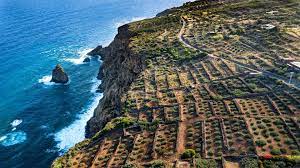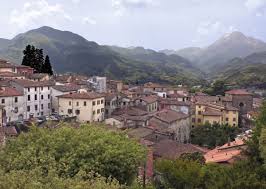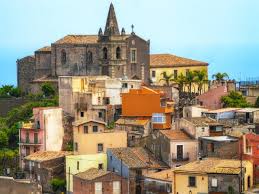The agronomic and macroeconomic forces behind olive oil prices in Italy

Rome: Olive oil prices in Italy have risen from 90 to 130 percent since September 2022, reflecting a combination of agronomic and macroeconomic factors that have complicated the situation for producers and consumers.
Climate change, olive fruit fly infestations, inflation, labor and import shortages have created a perfect storm for the Italian olive oil sector.
All the costs have increased for us due to inflation, and every year, it is harder to find specialized workers. However, we cannot raise prices too much.
According to research published in the scientific journal Agronomy, climate change has impacted olive production significantly over the last few years in Italy, modifying the suitable growing areas for olive trees and exacerbating extreme weather events.
While climate change has made it possible to cultivate olive trees in areas where it was not before – such as in many northern and mountainous regions of Italy – it has also made olive growing harder and more unpredictable in traditional areas.
For example, last summer and winter were very dry, causing trees to suffer from drought. Then, during flowering, windy and rainy weather resulted in a poor fruit set and, in turn, a lower olive yield.

In general, the seasons are changing faster than the trees can adapt, which has contributed to the trend of declining production in Italy over the past three decades.
Climate change has also created favorable conditions for the olive fruit fly, the most pernicious pest for the crop, and the spread of other pests and diseases.
Due to higher average temperatures throughout the year, especially in winter, its survival rate and reproduction cycles have significantly increased.
Moreover, this past summer in Italy, the weather was more humid than in other years, facilitating the survival of olive fly larvae, which are more likely to die in hot and dry weather.
Due to the impacts of climate change, southern Italian regions are experiencing more problems with drought, while the areas most affected by olive fruit flies are shifting to the north.
“This summer, it has been hot and dry here in Sicily, and this created an unfavorable environment for olive fruit flies,” said Giuseppe Milano, an agronomist at the winery and olive oil producer Donnafugata. “We used pheromone traps as a precaution, but we didn’t need any additional intervention to protect our olives, and this allowed us also to have a better harvest than last season.”
Olives attacked by flies lose most of their nutritional qualities because of premature oxidation, and fall prematurely. Besides a reduced yield in affected groves, there is also more risks of lower-quality production.
Along with agronomic challenges exacerbated by climate change, the high cost of living, but especially the lack of available labor, is causing many issues for producers.
In Europe and especially Italy, the cost of living has increased significantly due to rising inflation, which has reached more than six percent in the past year, according to official data from the Italian National Institute of Statistics.
Rising prices have caused a series of chain reactions in the market. Moreover, wars and market speculation have made the economic situation even more challenging for small producers.
All the costs for farmers have increased, especially fertilizers, fuels and equipment. These soaring production costs have subsequently been transferred to the consumer, compounding the rise in olive oil prices.
But the biggest issue for olive growers is the lack of labor for harvesting, cultivation and other specific operations such as pruning.
The labor shortage is because agricultural work has lost appeal among young people who prefer less physical jobs. Still, it is further exacerbated by low and unstable wages in the sector, making it challenging to attract and retain the skilled workforce needed for specific olive tree operations.
“All the costs have increased for us due to inflation, and every year, it is harder to find specialized workers,” said Eugenio Ranchino of Frantoio Ranchino in Umbria. “However, we cannot raise prices too much; otherwise, we would have difficulties selling it to our loyal customers, who are mostly locals.”
The inability to maintain a skilled workforce from one harvest to the next is causing many management issues and increasing costs that, in the long run, could cause possible land abandonment.
There are subsidies from the Common Agricultural Policy to support traditional olive growers and prevent abandonment, but many in the sector argue that these are not enough.
Aside from the impacts of climate change and the macroeconomic situation, olive oil prices in Italy are also affected by the general lack of supply domestically and internationally.
Italy is expected to produce about 289,000 tons of olive oil in the 2023/24 crop year, exceeding last year’s yield by about 20 percent and the five-year average by five percent.
However, this production is insufficient to meet demand from the domestic and export markets. On average, Italy sells one million tons of olive oil annually, importing what it does not produce domestically.
Typically, Italian bottlers turn to Greece, Spain and Tunisia to meet the shortfall. However, Spain’s historically poor harvest last year and anticipation of another low yield this year mean bottlers have had to turn elsewhere, including Turkey and Morocco.
This reshuffle was further complicated when both countries banned bulk exports earlier in the autumn to stem rising prices at home.
“Not many people know that there are also the largest olive oil packaging companies in Italy,” said Giulio Mannelli, the president of the association Aprol. “We produce only around three percent of the national production, and most of the olive oil comes from imports.”
“This problem is exacerbated by a huge decrease in production this year and increasing demand, especially from abroad and through e‑commerce,” he added.
Adapting to the changing climatic and macroeconomic situation in the olive groves will be critical to the sector. There are some solutions; one could be genetic research on new cultivars of olive trees that are more resilient to climate change.
Another solution could come from data collection and landscape analysis to find new, more suitable cultivation areas, along with integrating meteorological stations in existing areas and using predictive models to prevent damage from extreme weather and pest infestations.
One solution to the lack of a specialized workforce and the rise in costs could be the training of new migrant workers or technological applications. New technologies could come from precision agriculture using drones, mechanization of many hand operations and adopting super-intensive [high-density and super-high-density] plantations to increase production efficiency.





